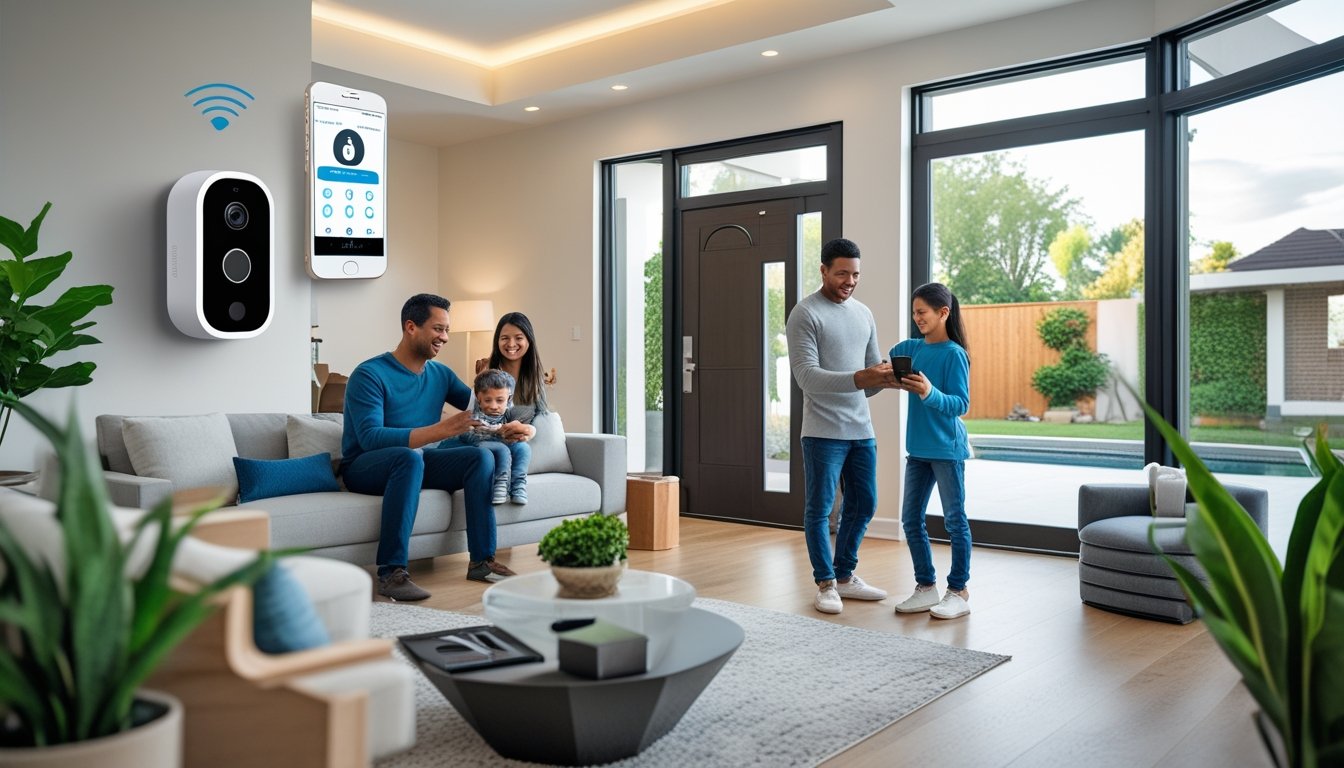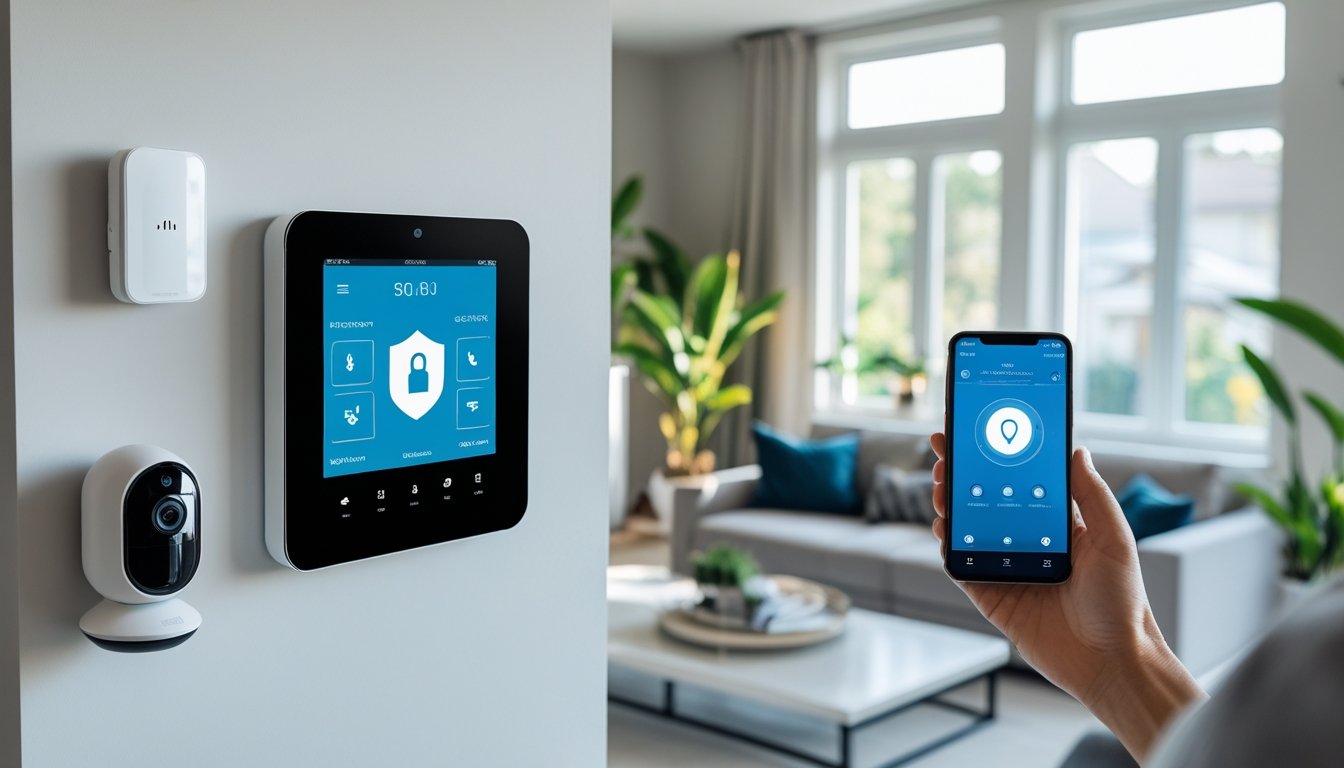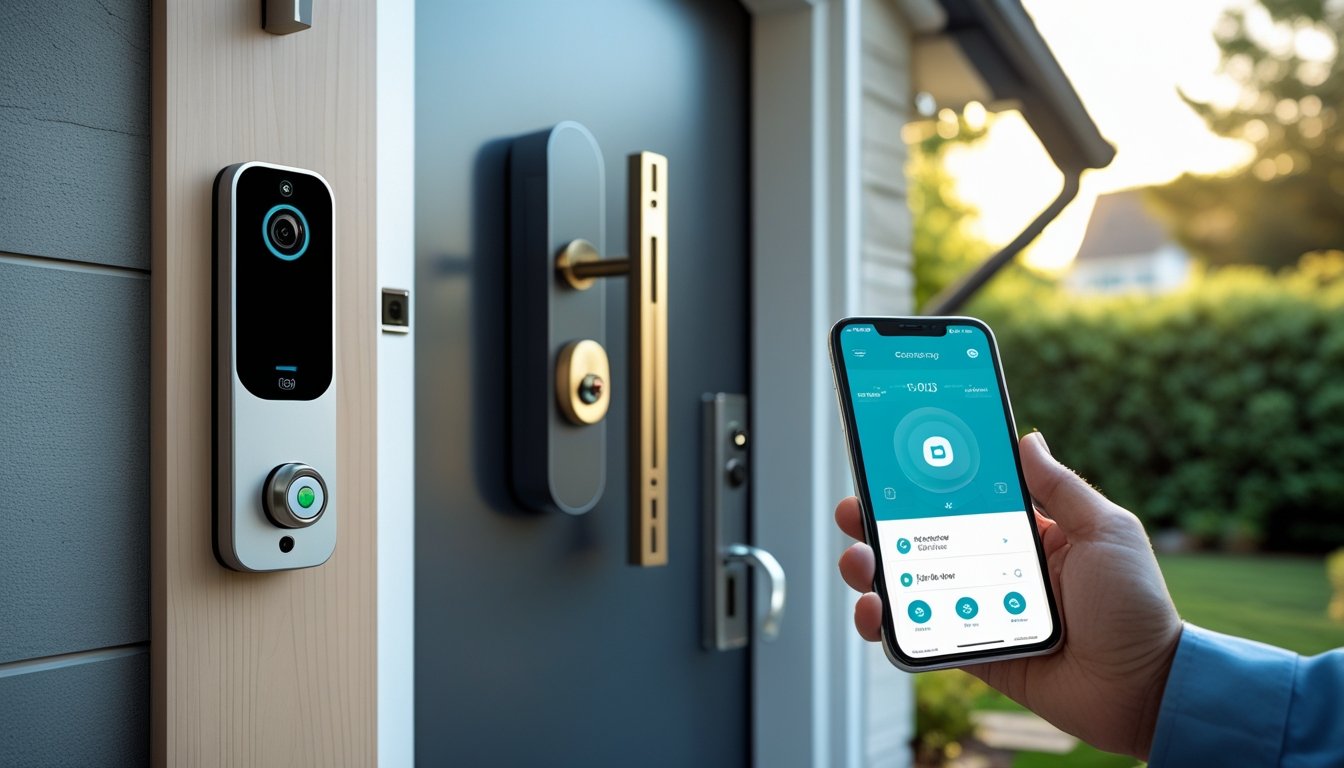Late updated: 08 Aug 2025 11:08
Written by: Daniel Harper
Ways To Enhance Home Security With Smart Technology: Top Modern Solutions
The rise of smart technology has revolutionised the way we approach home security. By integrating digital solutions like smart locks, video doorbells, and automated lighting, we can now create a modern fortress that's both safe and convenient. These technologies work together to monitor our homes in real-time, providing peace of mind through greater control and surveillance.

Our homes, once dependent solely on traditional locks and alarms, have evolved into interconnected digital spaces. IoT devices form the backbone of this transformation, offering seamless integration that enhances the security landscape. As we make these advancements, it's crucial to address potential vulnerabilities, ensuring that our smart home ecosystem remains secure against modern threats.
Exploring and utilising smart technology for security not only safeguards our property but also enriches our lifestyle by combining safety with sophistication. Understanding the core smart technologies and how to secure these devices can greatly enhance the protection of our homes.
Key Takeaways
- Smart home technology enhances security through devices like locks and cameras.
- Ensuring IoT devices are secure is crucial for a protected home ecosystem.
- Integrating technology with home security adds convenience and peace of mind.
Core Smart Technologies to Enhance Home Security

Incorporating smart technologies into home security offers enhanced protection and convenience. Key advancements such as smart locks, video doorbells, and integrated systems transform how we secure our homes.
Smart Locks and Keyless Entry
Smart locks have revolutionised how we think about door security. They allow us to secure our homes without the need for traditional keys. With options to unlock doors using smartphones, key cards, or even biometric data, these locks offer flexibility and peace of mind. Many systems can be integrated with existing smart home systems like Amazon Echo or Google Home, allowing for voice-activated entry. They optimise security by providing digital logs of entries and exits. This feature is particularly useful for tracking access when you're away. The convenience of remote access ensures you never need to worry about misplaced keys again.
Video Doorbells and Smart Doorbells
Video doorbells, exemplified by brands such as Ring, give us the ability to monitor our front door from anywhere. These devices provide live video feeds, and many models include two-way audio. This feature enables you to communicate directly with visitors or delivery personnel, even when you're not at home. Motion sensors integrated into smart doorbells alert us to activity, reducing the risk of missed visitors or potential intrusion attempts. They blend seamlessly with home automation systems, allowing footage to be viewed on tablets, smartphones, or smart TVs. Additionally, these devices can deter potential intruders by making it obvious that the property is under surveillance.
Security Cameras and Motion Detectors
Security cameras equipped with motion detectors are essential for comprehensive home monitoring. They alert us to suspicious movements, helping to prevent unauthorised access or vandalism. Available as standalone units or as part of integrated systems, these devices work well with smart home platforms, offering remote access to live feeds. Many cameras can record in high-definition, ensuring clear visuals even in dim lighting. Night vision capabilities further enhance their effectiveness. By integrating with smart systems, alerts can be sent directly to our smartphones, keeping us informed and allowing for immediate response.
Home Automation and Integration With Smart Home Systems
Home automation ties together the various components of smart security, allowing for centralised control over all devices. These systems connect our security features to platforms like Amazon Echo or Google Home, providing effortless management. By automating security protocols, such as locking doors and activating cameras at specific times, we enhance our home's protection. This integration makes daily routines more efficient and safe. An integrated system also allows for customisation, where we can set specific actions in reaction to events. This might include activating exterior lighting when motion is detected or automatically locking doors at dusk.
Securing Your Smart Home Ecosystem
Ensuring the safety of our smart home ecosystem involves a holistic approach that includes securing the home network, managing passwords, and using trusted brands with regular updates. By focusing on these areas, we can significantly reduce vulnerabilities and enhance the protection of our devices.
Home Network and Device Security
Securing our home network is fundamental. We need to start by configuring our router with a strong, unique password and ensuring it uses WPA3 encryption. Disabling remote management and using a guest network for visitors can also help.
Employing strong firewalls and regularly checking for firmware updates on devices such as smart thermostats, Ring cameras, and Google Home ensures they remain protected. It's crucial to monitor network traffic and be aware of any unusual activity that might indicate an intrusion.
Network segmentation is another effective technique. By splitting our network into different segments, we can isolate smart home devices from sensitive data. This limits access routes for potential attackers and adds an extra layer of security.
Password Management and Multi-Factor Authentication
Using complex, unique passwords for each smart device is vital. A reliable password manager can help us keep track without compromising security. It's essential not to reuse passwords across devices or accounts, as this increases vulnerability.
Multi-factor authentication (MFA) is a powerful tool in enhancing security. By requiring additional verification steps, such as a code sent to our phone, we add an extra layer of defence for devices like Amazon Echo and others. This method significantly reduces the risk of unauthorised access.
Regularly updating passwords and reviewing account security settings helps maintain a secure environment. We should also educate household members about the importance of secure passwords and MFA to foster a culture of security across the home.
Selecting Reputable Brands and Ensuring Device Updates
Choosing smart home devices from reputable brands ensures higher standards of security. Trusted manufacturers such as Google, Amazon, and others often provide regular security updates and patches to address vulnerabilities.
It's vital to register our devices to receive alerts for updates. Keeping firmware and software up to date reduces the risk of exploitation by cyber threats. Automatic update settings should be enabled whenever possible.
We need to assess the privacy policies of the products we choose. Companies with transparent data handling practices inspire confidence that our information is safeguarded. Always remain vigilant and proactive in maintaining our smart home system's integrity.
Frequently Asked Questions

When discussing smart technologies for home security, the focus is often on selecting appropriate features, understanding the integration with automation, and considering the benefits of monitoring options. It is also important to evaluate system reliability, cost, and the steps required for installation.
What features should one consider when selecting the optimal smart home security system?
When choosing a smart home security system, we need to focus on key features like real-time monitoring, compatibility with other smart devices, and ease of use. Additional elements such as motion detection, night vision, and two-way communication can enhance security measures significantly.
How can home automation contribute to enhancing residential security?
Home automation provides the ability to control lighting, locks, and cameras remotely, thereby increasing security. Automating lights to switch on when movement is detected can deter potential intruders. Alerts sent directly to our phones keep us informed of any suspicious activities.
What are the advantages of a self-monitored versus a professionally monitored home security system?
Self-monitored systems offer flexibility and lower ongoing costs, as we manage alerts and responses. Conversely, professionally monitored systems provide 24/7 service, with immediate response to alerts, which can be reassuring for many households.
In terms of reliability and cost-effectiveness, which home alarm systems rank the highest?
Reliable and cost-effective systems often include brands renowned for technology and customer service. When evaluating options, it’s wise to consider third-party reviews and warranty offerings to ensure value for money without compromising on safety.
What steps are involved in installing a smart home security solution?
Installation typically involves assessing our home’s specific security needs, selecting compatible devices, and setting up the system according to manufacturer instructions. Many systems offer DIY setups; however, professional installation may be advised for comprehensive solutions.
How do the latest smart home security systems integrate with other smart home devices?
Integration capabilities are crucial for seamless operation. Most modern security systems connect effortlessly with existing smart home devices, creating a cohesive network. This allows for centralised control via apps or hubs, enabling us to efficiently manage security and automation from a single platform.
